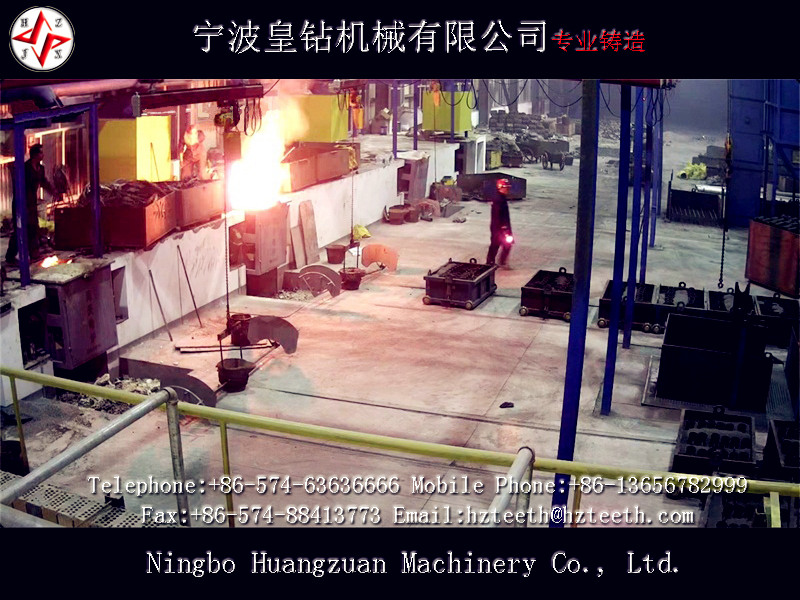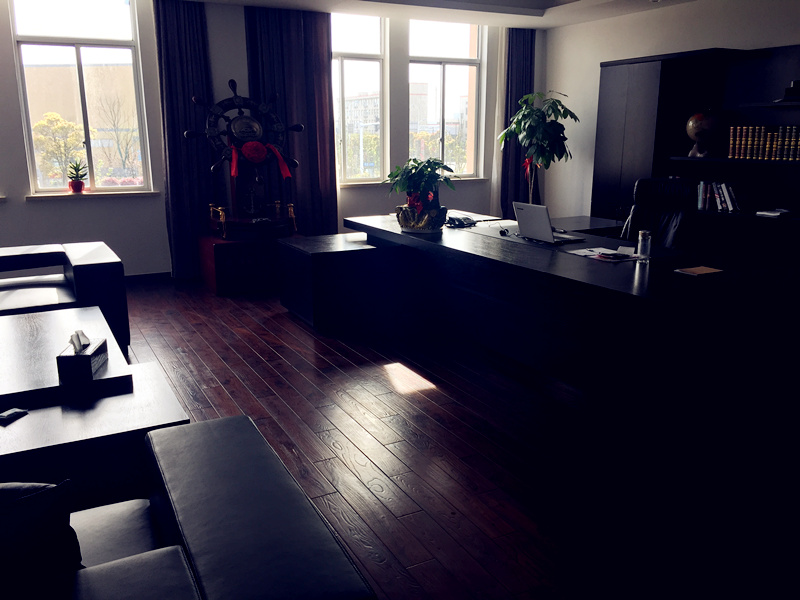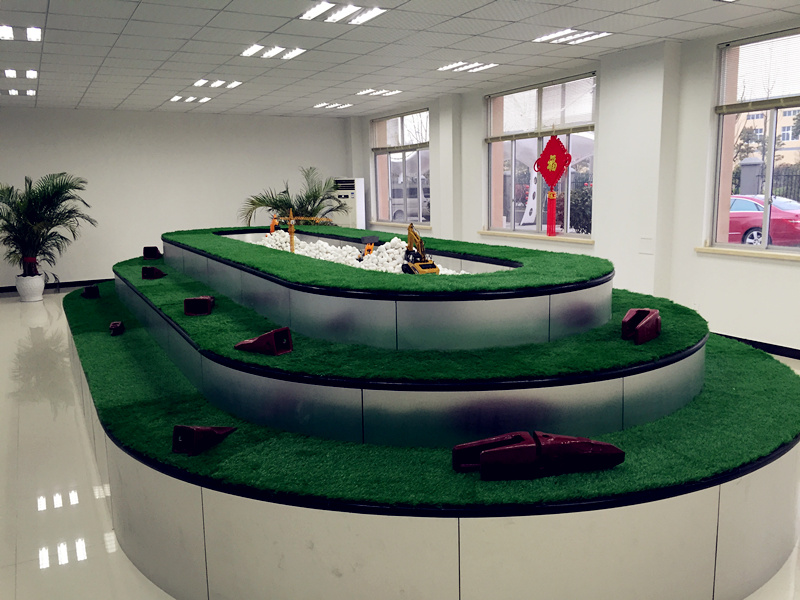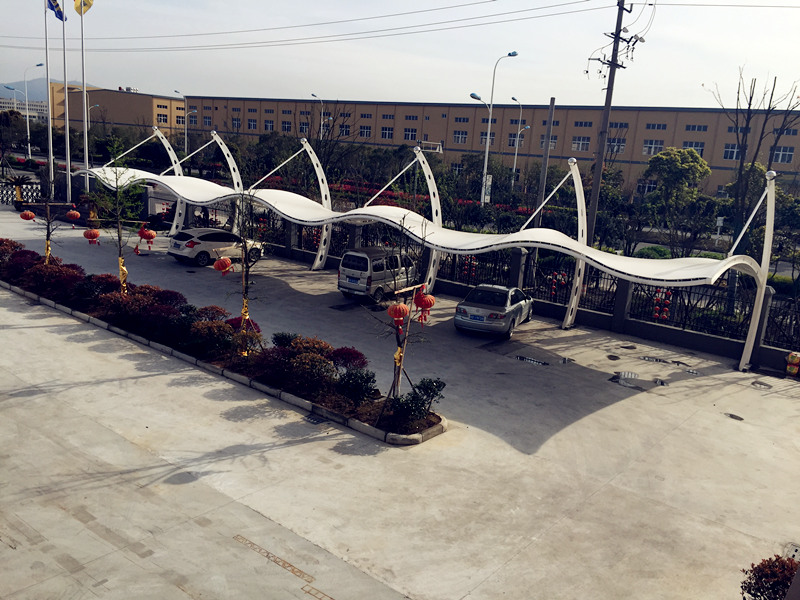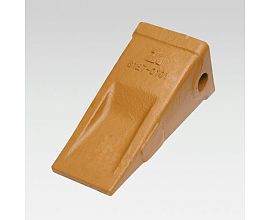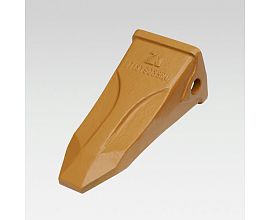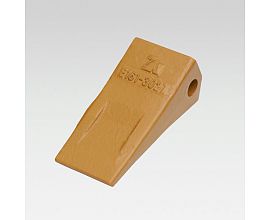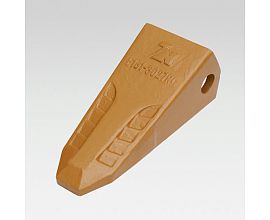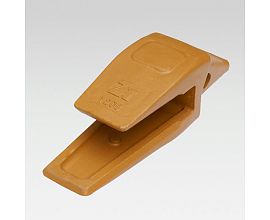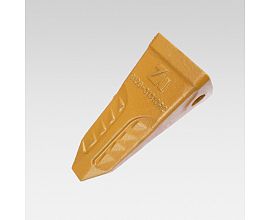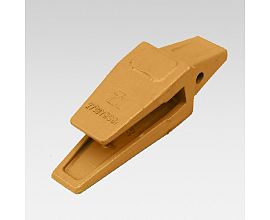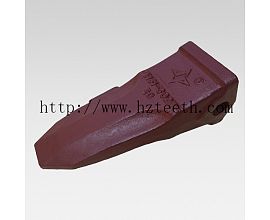Bucket teeth of excavators are important parts and vulnerable parts of excavators. They are combined bucket teeth composed of teeth base and teeth tip, which are connected by pins. Since the wear failure part of bucket teeth is the tip of the tooth, only the tip can be replaced. The bucket teeth of an open-pit excavator failed early due to severe wear and tear during operation. In view of the bucket teeth of this batch, the failure forms and causes of bucket teeth surface were analyzed, and improvement measures were put forward.
1 Failure Form
Bucket teeth are subjected to different degrees of wear and impact under different working conditions, which results in different degrees and forms of failure. Under normal working conditions, the bucket teeth will fail after only 3 days (about 36 hours), which is not up to the requirements either economically or practically. From the macroscopic photos of the failure parts, it can be seen that the front working surface of the bucket teeth has obvious plough groove scratches, a small amount of plastic deformation at the tip and no cracks. The front working face (the contact surface with the ground) is the thinnest, about 4 mm, and the back working face is about 8 mm.
2 Analysis and discussion
(1) Force analysis Bucket teeth face contact with excavated objects, in a complete excavation process in different stages of the stress situation is different. When the tooth tip first contacts the surface of the material, the bucket tip is strongly impacted because of its faster speed. If the yield strength of bucket teeth is low, plastic deformation will occur at the tip. With the increase of excavation depth, the force of bucket teeth will change. When the bucket teeth cut the material, the bucket teeth move relative to the material, which produces a large positive extrusion force on the surface, thus generating a large friction between the bucket teeth working face and the material. If the material is hard rock, concrete and so on, the friction force will be great. The repeated action of this process results in different degrees of surface wear and tear on the bucket teeth working face, which leads to deep furrows. The positive pressure of front working face is obviously greater than that of rear working face. The front working face is worn seriously. It can be judged that the positive pressure and friction are the main external mechanical factors of bucket teeth failure, and play a major role in the process of failure.
(2) The process analysis takes two samples from the front and back working faces respectively, and grinds them flat for hardness testing. It is found that the hardness of the same sample varies greatly, and the preliminary judgment is that the material is not uniform. After grinding, polishing and corrosion of the samples, it was found that there were obvious boundaries on each sample, but the locations of the boundaries were different. From the macroscopic point of view, the surroundings are light gray, and the middle part is dark, which indicates that the part is likely to be inlaid castings. On the surface, the enclosed part should also be inlaid blocks. Hardness tests on both sides of the boundary were carried out on HRS-150 digital Rockwell hardness tester and MHV-2000 digital hardness tester, and the difference was obvious. The above analysis proves that the bucket teeth are insert structure. The enclosed part is the insert and the surrounding part is the matrix. The compositions of the two alloys are similar. The main alloying components (mass fraction,%) are 0.38C, 0.91Cr, 0.83Mn and 0.92Si. The mechanical properties of metal materials depend on their composition and heat treatment process. The similar composition and different hardness indicate that the bucket teeth are put into use without heat treatment after casting. Later organizational observations have also proved this point.
(3) Microstructure analysis and metallographic observation showed that the matrix was mainly black flake structure. The mosaic consists of white and black patches, and there are more white patches far from the cross-section. Further microhardness tests show that the white massive structure is ferrite, and the black fine sheet structure is a mixed structure of Troostite or troostite and pearlite. The formation of bulk ferrite in the insert is similar to that of the phase transformation zone in the HAZ. Due to the hydrothermal effect of metal in the casting process, the region is in the austenite and ferrite two-phase zone, in which the ferrite fully grows up and its morphology maintains to room temperature. Because of the thin wall of bucket teeth and the large volume of the insert, the temperature of the central part of the insert is low, and no large ferrite is formed.
(4) The wear test on MLD-10 wear tester shows that the wear resistance of matrix and insert under small impact abrasive wear test is better than that of quenched 45 steel. At the same time, the wear resistance of the matrix and the insert is different, and the matrix is more wear-resistant than the insert. The compositions on both sides of the matrix and the insert are similar. It can be seen that the insert in the bucket teeth mainly plays the role of chilled iron. In the process of casting, the grain size of matrix is refined to improve its strength and wear resistance. Because of the influence of casting heat on the insert, the structure of the insert is similar to that of the heat affected zone of welding, which does not enhance the wear resistance. If proper heat treatment is carried out after casting to improve the structure of matrix and insert, the wear resistance and service life of bucket teeth will be obviously improved.
3 Conclusion
(1) The material of the bucket teeth is low alloy wear-resistant steel, which is suitable for the bucket teeth. However, due to the lack of necessary heat treatment, uneven structure of bucket teeth, insert did not play its due role, the overall wear resistance of bucket teeth is poor, leading to early failure.
(2) It is suggested that proper normalization should be carried out after casting to improve the structure and properties and service life of the castings. After reasonable heat treatment of castings, the service life of bucket teeth increases nearly two times under the same working conditions.
Huangzuan Machinery established in 2008, is a specialized manufacturer of bucket teeth, bucket adaptor and side cutter which is used Caterpillar, Komatsu, Hyundai, Daewoo, Kobelco, Hensley, Liugong, Hitachi, XCMG, XGMA, Volvo, JCB .etc.
With production facilities covering an area of 18136 square meters and staff of 100, our annual processing capability equals approximately 12,000 metric tons. we currently have the technology of lost wax casting, precoated sand casting, resin sand casting, have the advanced instrument such as spectromaxx, Brinell hardness tester, universal testing machine, metalloscope.



